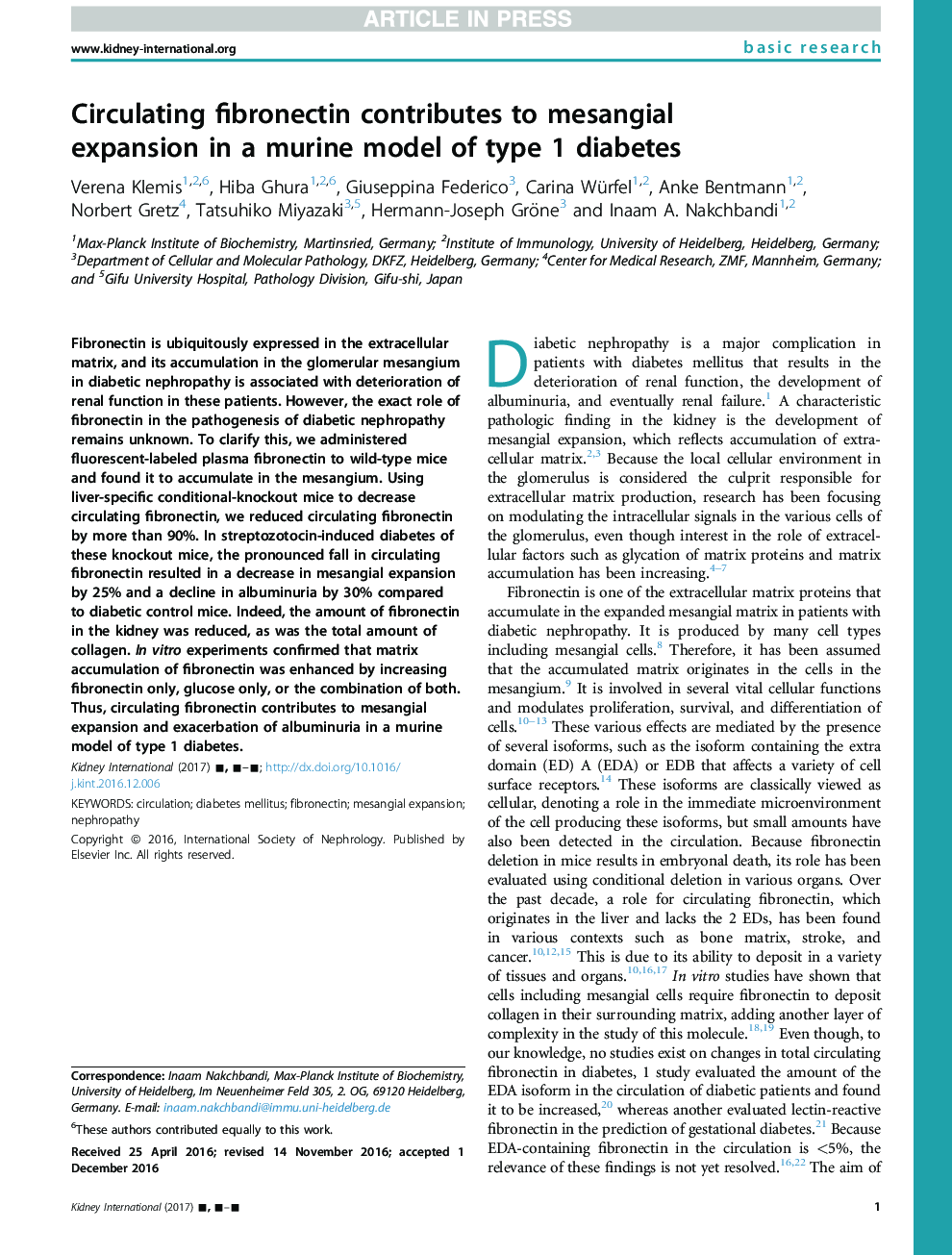| Article ID | Journal | Published Year | Pages | File Type |
|---|---|---|---|---|
| 5688294 | Kidney International | 2017 | 12 Pages |
Abstract
Fibronectin is ubiquitously expressed in the extracellular matrix, and its accumulation in the glomerular mesangium in diabetic nephropathy is associated with deterioration of renal function in these patients. However, the exact role of fibronectin in the pathogenesis of diabetic nephropathy remains unknown. To clarify this, we administered fluorescent-labeled plasma fibronectin to wild-type mice and found it to accumulate in the mesangium. Using liver-specific conditional-knockout mice to decrease circulating fibronectin, we reduced circulating fibronectin by more than 90%. In streptozotocin-induced diabetes of these knockout mice, the pronounced fall in circulating fibronectin resulted in a decrease in mesangial expansion by 25% and a decline in albuminuria by 30% compared to diabetic control mice. Indeed, the amount of fibronectin in the kidney was reduced, as was the total amount of collagen. In vitro experiments confirmed that matrix accumulation of fibronectin was enhanced by increasing fibronectin only, glucose only, or the combination of both. Thus, circulating fibronectin contributes to mesangial expansion and exacerbation of albuminuria in a murine model of type 1 diabetes.
Related Topics
Health Sciences
Medicine and Dentistry
Nephrology
Authors
Verena Klemis, Hiba Ghura, Giuseppina Federico, Carina Würfel, Anke Bentmann, Norbert Gretz, Tatsuhiko Miyazaki, Hermann-Joseph Gröne, Inaam A. Nakchbandi,
